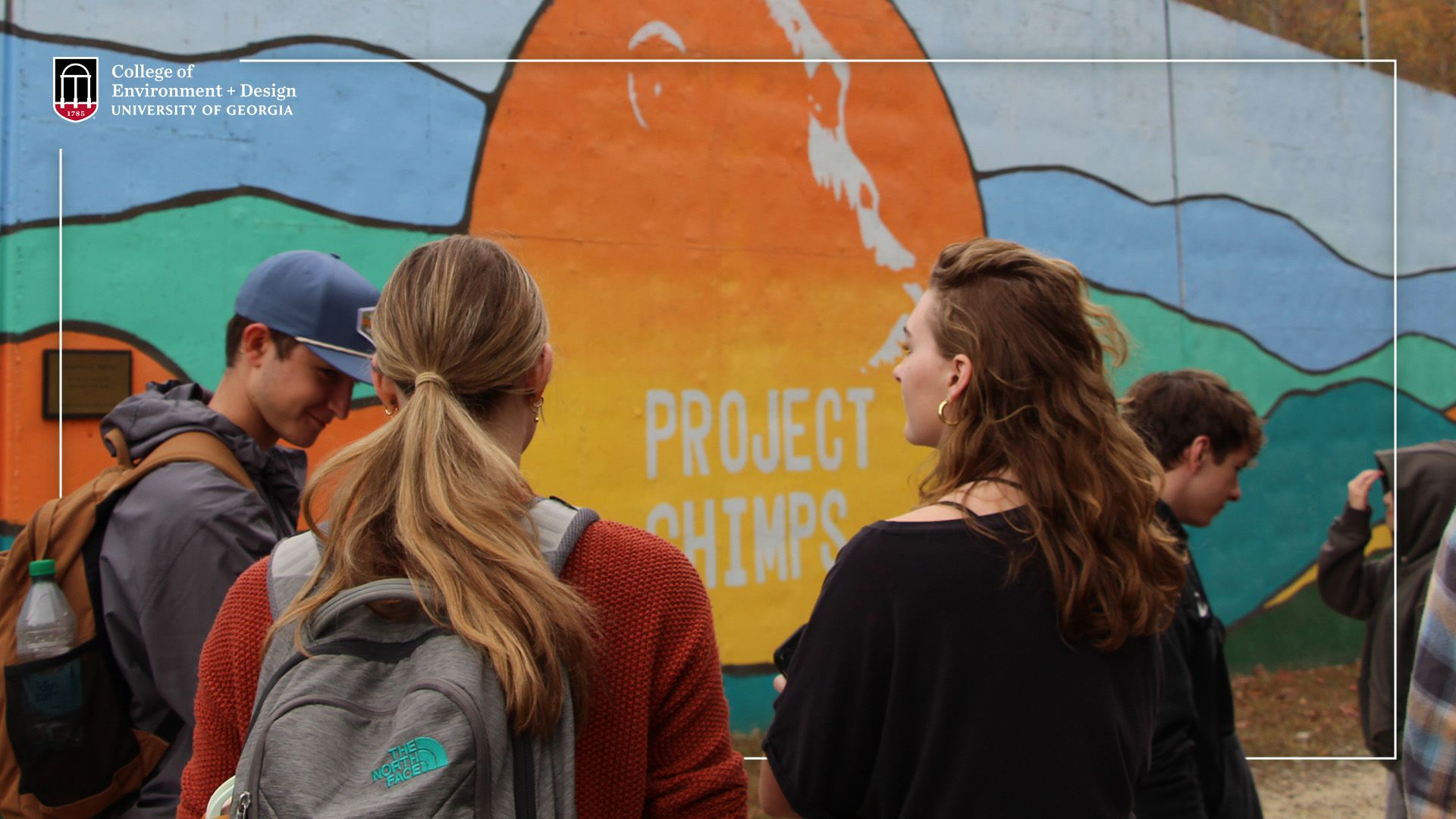Landscape architecture students are trained to design outdoor environments for humans, but it’s not every day that they get to apply those skills to a chimpanzee sanctuary! The nonprofit, based in Blue Ridge, GA, serves as a place for chimpanzees retired from medical testing to spend the remainder of their lives. The facility is a former gorilla habitat that has been retrofitted to house chimpanzees. The organization currently provides care for 95 chimpanzees on over 230 acres of forested property.
In 2015 medical testing on chimpanzees became illegal, and chimpanzees in captivity joined their wild counterparts on the endangered species list. In anticipation of this ruling, Project Chimps reached an agreement with the New Iberia Research Center (NIRC) to provide sanctuary for their chimpanzees. Located in New Iberia, Louisiana, NIRC houses the largest population of chimpanzees in the United States.
The sanctuary is not a zoo, but many areas of the Project Chimps site are open to the public. There are public hiking trails throughout the site and a private cabin that can be booked for overnight stays. The organization is currently working on its phase two expansion plan which includes building more habitats for the remainder of the NIRC chimpanzees. As Project Chimps extends its scope, the organization wanted to create a space where visitors could gather to learn more about the resident chimpanzees and how the nonprofit functions. Additionally, organizers wanted this to be a space where workers and volunteers could gather fresh fruits and vegetables to incorporate into the chimps’ all-vegan diet. Having collaborated with the College of Environment and Design previously on a site plan for another portion of the property, Project Chimps staff reached out to professor Buitrago for assistance in designing a functional and educational garden.
Students spent the first part of the semester researching the organization and their needs. In November, students made the trip from Athens to Blue Ridge to tour the facilities and become more familiar with the job site. This type of experiential learning is a key part of the College of Environment and Design’s curriculum and teaching philosophy. “Over the course of the tour, we learned what a great organization Project Chimps is. I think by working on this project, we will be able to bring greater awareness to the organization’s mission,” commented Gianna Pacelli when asked about the project.
The students formed groups to reflect on the needs and opportunities they saw after meeting with the client and experiencing the chimpanzee sanctuary as visitors themselves. The main considerations included accommodation of staff needs, a space to sit and listen to pre-tour safety briefings, and educational messaging for visitors. The groups tackled the challenge in different ways, with noteworthy elements such as raised garden beds for visitors of all abilities, play areas for young visitors that mimicked the climbing structures and hammocks the chimps enjoy, and memorial spaces to honor chimps that had passed away.
Project Chimps Director, Ali Crumpacker, attended the students’ final presentation, which was organized as a pitch competition, with a jury awarding first, second, and third place ribbons! Crumpacker remarked on the uniqueness of each group’s designs and appreciated that Project Chimps’ needs were fully understood. The first-place ribbon went to the team that best blended the functional needs of the client and used a light touch at the site, blending form, function, accessibility and beauty.
“As a local non-profit that incorporates education into our mission, we are always thrilled with opportunities to work with students, be that at school age or college level, to further our work. This is the second project we have completed with the College of Environment and Design. The work is always outstanding and above what one might expect from college students who are still in the midst of learning this trade. We look forward to bringing the winning design for our browse garden to life later this year,” said Crumpacker.
In just a few months, Project Chimps has secured major donors that are invested in making this new site a reality and invited the students to stay in touch and see their ideas manifested soon. “I’m so excited and I think this will be a great project. If implemented, there will be so many applicable uses for this space throughout the years,” commented BLA student Michaela Shea.
The Project Chimps board has already selected the elements they would like to include in the site’s final design and are hoping to break ground on the hardscaping elements this Spring.
For more information about Project Chimps and updates about the foraging garden project, visit ProjectChimps.org




